| Суббота 27.04.2024 15:30 |
Приветствую Вас Гость Главная | Регистрация | Вход | RSS |
|||||||||
|
Russian Vacation SimsНовости-News Новые обновления 25.10.2013 1903 Ball in the Winter Palace 11 и 13 февраля 1903 года сразу после окончания Рождественского поста Петербургский высший свет давал костюмированный бал. В приглашениях, разосланных гостям, основным требованием было явиться на бал в костюмах XVII века. Это был последний бал империи Романовых. 11 and February 13, 1903 immediately after the end of Advent Petersburg high society was giving a costume party. The invitations sent out to the guests, the main requirement was to attend a costume ball at the XVII century. It was the last ball of the Romanov empire. 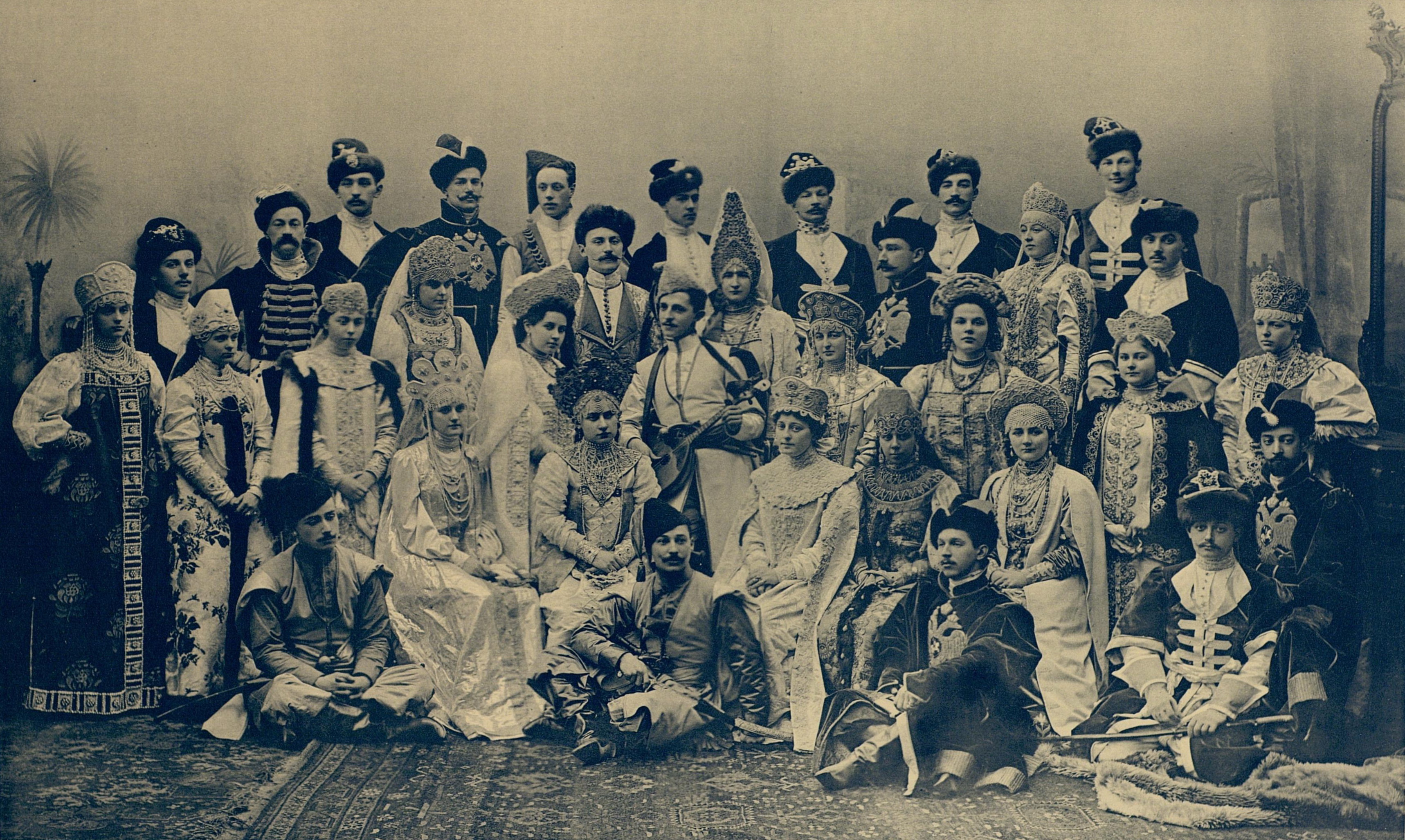  Russian Emperor, King of Poland and Grand Duke of Finland, the last Emperor of the Russian Empire NicolasII and Alexandra Feodorovna  His Imperial Highness the Grand Duke Andrei Vladimirovich  Anna S. Istomin  Countess Varvara Musin-Pushkin  Princess Elizabeth N. Obolensky  Her Imperial Highness Grand Duchess Elizabeth Feodorovna  Her Imperial Highness the Grand Duchess Xenia Alexandrovna  Her Imperial Highness Grand Duchess Maria Pavlovna, the Duchess of Mecklenburg - Schwerin  His Imperial Highness Grand Duke Sergei Alexandrovich Новые обновления 09.05.2012 Новые предметы для строительства Спасо-Преображенского монастыря в Ярославле. Спасский монастырь сыграл важную роль в истории Ярославля, будучи долгое время его духовным, культурным и экономическим центром. Основан он был в XII веке за стенами тогдашнего города около переправы через Которосль, заняв угловое положение в системе городских оборонительных сооружений. В 1216—1218 годах в Спасском монастыре работало первое в Северо-Восточной Руси духовное училище, затем переведённое в Ростов. В 1216—1224 годы в монастыре построили Спасо-Преображенский собор. В честь образования Ярославского княжества в 1218 году, по преданию, у юго-восточного угла собора возвели миниатюрную Входоиерусалимскую церковь, которая не дошла до наших дней. Уже в первой половине XIII века в монастыре образовалась большая библиотека, велась работа по переписке книг. В XVI веке были возведены звонница и Трапезная палата с Крестовой (Рождественской) церковью, а в 1550—1580 — каменные стены вместо старых деревянных. Монастырь стал самой укреплённая частью города, ведь Ярославский кремль никогда не имел каменных стен, а после того как его стены в конце XVIII века были разобраны, ярославским кремлём, зачастую, стали ошибочно называть Спасский монастырь. Любил посещать монастырь царь Иван Грозный. К концу 1560-х годов от него было полученно 55 жалованных грамот, дающих во владение 6 сёл и 239 деревень, рыбные ловли и соляные варницы, а также освобождение от общего тягла на ярославском посаде и судебный иммунитет. Его сын, царь Фёдор, пожаловал монастырю 12 грамот. В 1609 году во время Смутного времени Спасский монастырь и Ярославский кремль выдержали осаду отрядов пана Будзило и воеводы Наумова, продолжавшуюся около месяца, в то время как остальная часть Ярославля была захвачена. От стен монастыря в 1612 году земское ополчение Минина и Пожарского отправилось на освобождение Москвы. С 21 марта по 16 апреля 1613 года в монастыре пребывал будущий царь Михаил Романов, находившийся здесь проездом из Ипатьевского монастыря в Москву, — отсюда он отправил свою первую грамоту — о согласии на престол. В дальнейшем он дал монастырю 18 жалованных грамот. В 1621—1646 гг. перестраивались стены монастыря, пострадавшие во время осады, — они стали более крупными, в значительной мере они сохранились до наших дней. Появились каменные башни — Богородицкая, Угличская (сохранилась), Глухая, Михайловская, Водяные ворота. В последней четверти века был построен Келейный корпус. К концу XVII века длина стен достигает 820 метров, высота — 10,5 метра, толщина — 2,8—3 метра. На стенах и башнях имелось хорошее вооружение — 15 крупных и 17 малых пищалей, 97 карабинов, 14 бочек с порохом. Монастырь владел значительной территорией в западной части города вдоль дороги на Углич, где в XVII в. выросли ряд монастырских слобод — Спасская, Богоявленская и др. (всего более 300 дворов). В результате он стал значительной силой, влиявшей на социальную и хозяйственную жизнь Ярославля, соперничая и иногда конфликтуя с его посадом. New updatings 09.05.2012 New subjects for building of Spasso-Preobrazhensky Convent in Yaroslavl.If taken by its date of first foundation, Yaroslavl is the oldest of all the currently existing towns on the Volga. Yaroslavl was founded by a prince of Kievan Rus Yaroslav the Wise during the period of his ruling the Principality of Rostov (988—1010) when he stepped ashore for the first time near the area now known as 'Strelka', a favorite contemporary park. On this spot which was well protected from attack by the high, steep banks of the Volga, Kotorosl and Medveditsa Rivers, Yaroslavl and his men began to set about building the first Yaroslavl Kremlin. By the 12th century, the Petropavlovsky and Spasso-Preobrazhensky monasteries of Yaroslavl had already come into existence, however at that time they were located well beyond the city limits. During the first two centuries of its existence Yaroslavl remained a minor fortified city of the Rostov-Suzdal lands. In July 2005 Yaroslavl's historic city center was inscribed onto the list of UNESCO World Heritage Sites. The support for this was in line with the list's second (a unique example of the combining of cultural and architectural styles between Western Europe and the Russian Empire. In 2009, Yaroslavl became a meeting place for global policy debates within the International Conference 'The Modern State and Global Security'. AKA Yaroslavl Global Policy Forum. The conference in Yaroslavl gathered the most authoritative representatives of political science, business community as well as the representatives of the governments of a number of different states. Dmitry Medvedev, President of the Russian Federation, José Luis Zapatero, Prime Minister of Spain, Francois Fillon, Prime Minister of France were all participants at the Conference. Yaroslavl is one of the eight city's of Russia's Golden Ring, a group of touristic, historic towns around Moscow. Yaroslavl is situated on the north-eastern side of this 'ring' and is the largest city in its chain. Whilst the city is best known for its architectural merits, it also has a relatively large repertoire of cultural attractions. Despite the effects of the Russian Civil War and a number of air-raids during the Second World War, the city of Yaroslavl has managed to retain a great deal of its 17th, 18th and 19th century urban substance. This has helped make the city recognizable as a monument to the architectural development and style of the Russian Tsardom. The center of the city, which covers an area of around 600 hectares has around 140 individual federally-protected architectural monuments. Despite all this, there are a number of buildings of architectural merit which are located outside of the city center. The most well-known building in the city is the 'Spaso-Preobrazhensky'. This monastery was originally founded in the 12th century and thus it, and its cathedral, are the oldest buildings in the city. The Transfiguration Cathedral itself, built in the year 1516, is the oldest detached building standing in the city. Typical for a Russian monastery of the Middle Ages, the Spaso-Preobrazhensky Monastery in Yaroslavl was not built to be no more than a place of worship, but also to be a citadel and kremlin in case, in times of war, there was a need for such a facility. This is still visible today as the monastery is surrounded by a thick 16th century, white-painted wall, complete with watchtowers and embattlements. Within these walls stand the magisterial churches, which, with their asymmetrically-ordered towers and beautifully decorated interiors, make for wonderful examples of traditional Russian sacral architecture. In addition to this there is a gatehouse church, with which the monastery's dungeons and treasury were connected. The monastery has long had a place in the history of Yaroslavl and continues, albeit nowadays as a museum, to play a significant role in the life of the city. It was largely thanks to the impregnability of the monastery that, during the time of the Troubles, the Russian peasants' army was able to defend the city and then go on to liberate Moscow from its Polish-Lithuanian occupiers. At the end of the 18th century, the oldest known text of the Tale of Igor's Campaign, the most renknowned work of Russian-language literature from the Middle Ages, was found in the library of the SPaso-Preobrazhensky Monastery. This masterpiece is now on display as a permanent exhibition within the monastery, along with other works of the age and an exhibition showing the conditions an author of the era would have lived in. 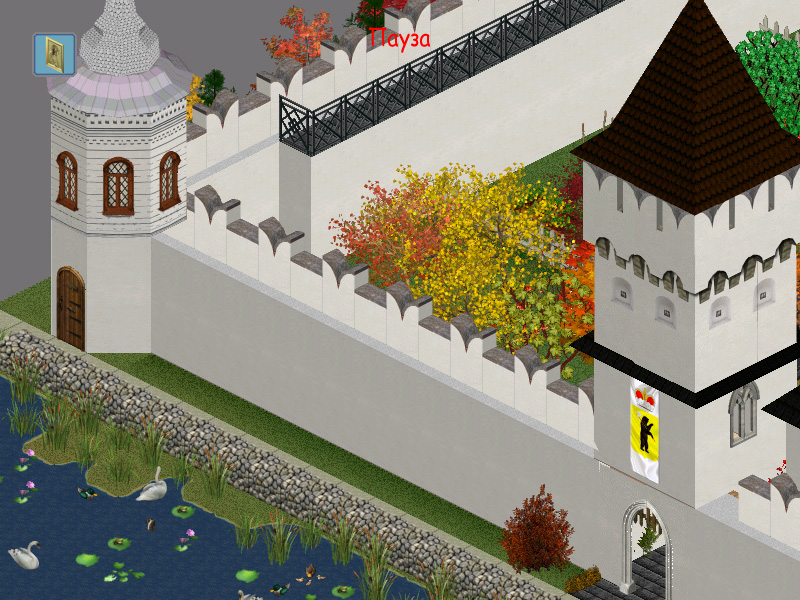 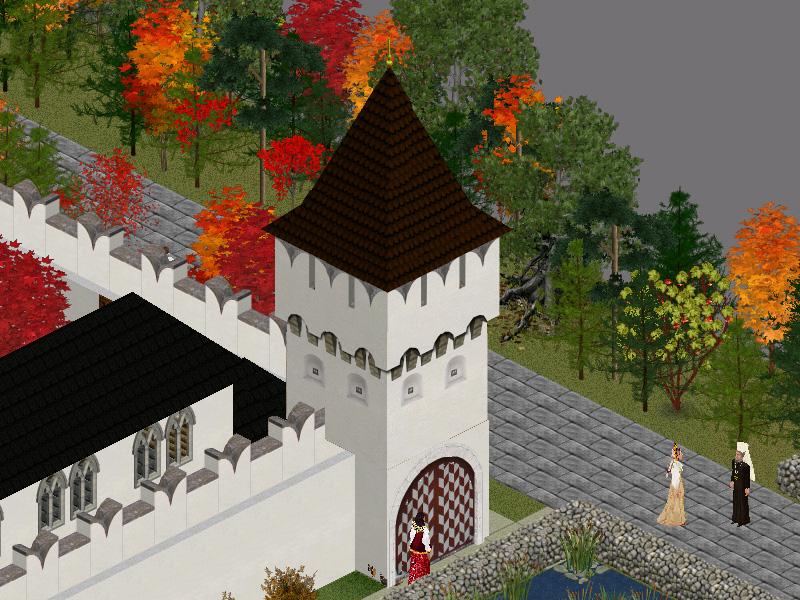 Новые обновления 30.10.2011 Новые предметы для строительства Новодевечего монастыря в Москве. Православный женский монастырь Русской Церкви. Новодевичий монастырь был основан великим князем Василием III в 1524 году — в честь Смоленской иконы Божией Матери «Одигитрия» — главной святыни Смоленска, в благодарность за овладение Смоленском в 1514 году. Монастырь расположен на Девичьем поле в излучине Москвы-реки, близ Лужников, в самом конце исторической Пречистенки. Является одновременно действующим монастырём и филиалом Государственного исторического музея. New updatings 30.10.2011 New subjects for building of Novodevichy Convent in Moscow.Novodevichy Convent, also known as Bogoroditse-Smolensky Monastery is probably the best-known cloister of Moscow. Its name, sometimes translated as the New Maidens' Monastery, was devised to differ from an ancient maidens' convent within the Moscow Kremlin. Unlike other Moscow cloisters, it has remained virtually intact since the 17th century. In 2004, it was proclaimed a UNESCO World Heritage Site. The Novodevichy Convent was founded in 1524 by Grand Prince Vasili III in commemoration of the conquest of Smolensk in 1514. It was built as a fortress at a curve of the Moskva River and became an important part of the southern defensive belt of the capital, which had already included a number of other monasteries. 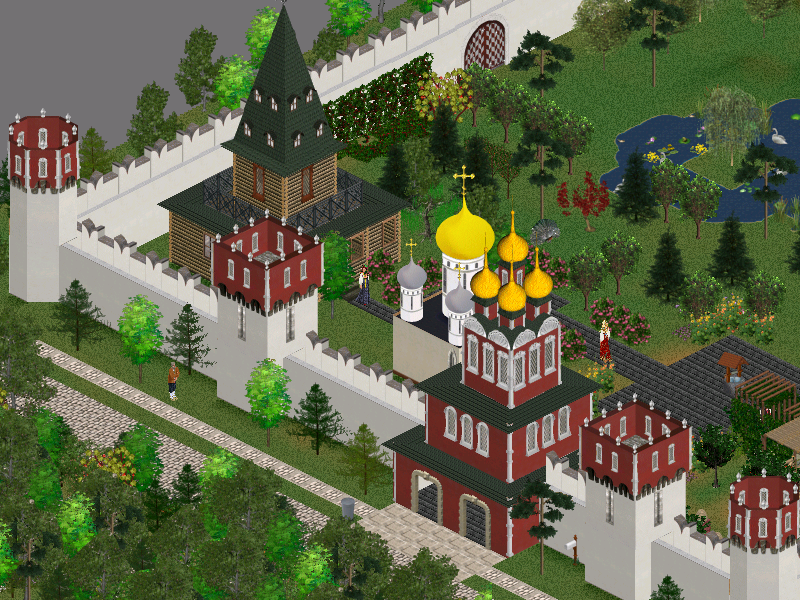 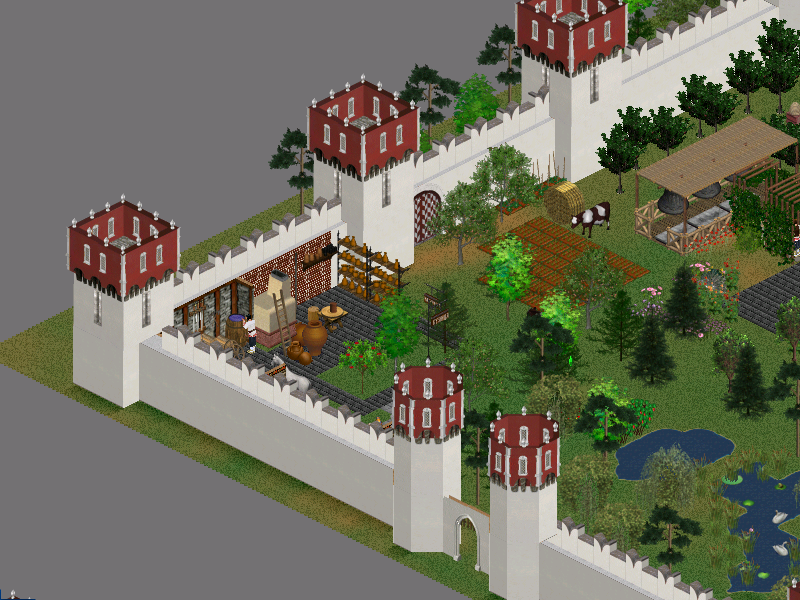 Новые обновления 24.01.2011 Новые предметы для строительства пирамид Майа и много скинов мексиканцев и индейцев племени Майа. New updatings 24.01.2011 New subjects for building of pyramids of Maya and it is a lot of skin of Mexicans and Indians of a tribe of Maya. 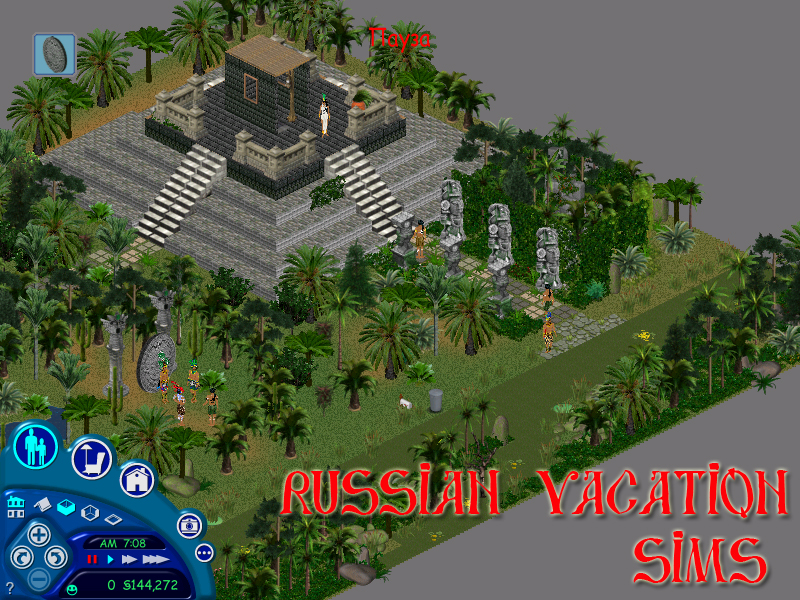 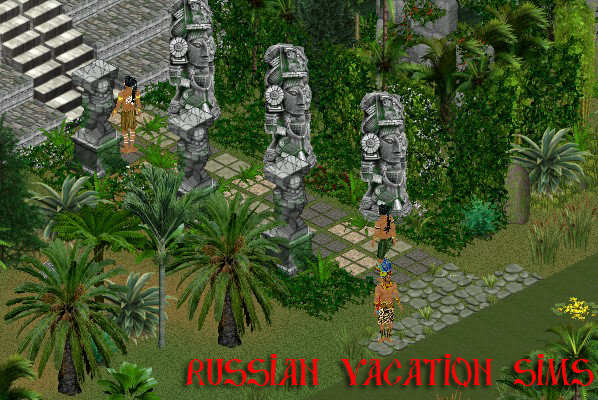 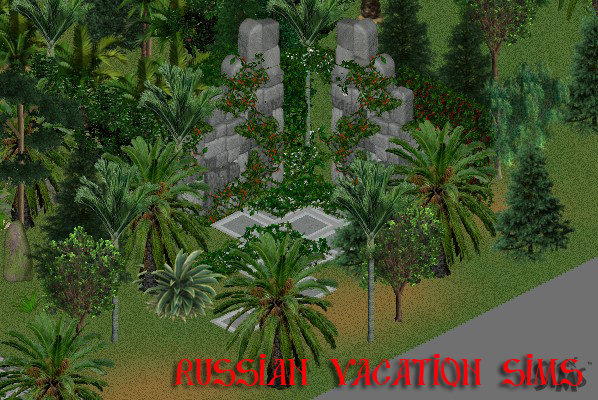 Новые обновления 9.12.2010 Новые праздничные, забавные скины и предметы из сказки Николая Васильевича Гоголя "Ночь перед рождеством" входящая в цикл Вечера на хуторе, близь Диканьки New updatings 9.12.2010 New objects and skins from Gogol's fairy tale "Night before Christmas" Christmas Eve, literally translated The Night Before Christmas, is the first story in the second volume of the collection Evenings on a Farm Near Dikanka by Nikolai Gogol. The story opens with a description of the winter scenery of Dikanka, Ukraine, a witch flying across the night sky and the devil stealing the moon and hiding it in his pocket, first playing with it in the sky, which no one in the village notices. Since it is the night before Christmas, the devil is free to roam around and torment people as he pleases, so he decides to find a way to get back at the village blacksmith, Vakula, because he paints hideous portraits of him in the church. In the village lives a Cossack named Choub, whose daughter Oksana, an exceptionally beautiful village girl loved by all the young boys, is the object of the blacksmith Vakula’s affection. Choub goes out in the night with his friend Panas to the sexton’s home gathering, suddenly noticing that the moon is not in the sky. Meanwhile, Vakula is trying to win over Oksana, who mentions that his mother, Solokha, is a witch. Choub and his friend are suddenly engulfed in a snowstorm started by the devil and lose each other. While his friend finds his way to the tavern, Choub comes upon his home, but the blacksmith, who is visiting Oksana, answers him. Choub is confused about why the blacksmith would be in his own house, and concludes its not his house. The blacksmith then sends him away. When Vakula goes back to Oksana, she tells him she won’t marry him unless he can get for her the slippers off the Tsaritsa’s feet. While their discussion is happening, Solokha is with the devil in her home, when someone knocks at the door. To hide the truth, she puts the devil in a coal sack, emptying out the contents. The mayor walks in and begins to speak with her but no sooner than he does there is another knock at the door. The mayor hides in another bag and the sexton comes into the home. While he is trying to play around with Solokha, there is another knock at the door and she hides him in another sack while Choub comes into the house. Another knock comes at the door and this time it is Vakula, and Choub goes into the sack that the sexton is already in, not knowing he is there, thinking it is something else. After his mother goes outside to speak with another visitor, the blacksmith takes the heavy bags to get them to the forge, wondering why he seems to have lost his strength temporarily, and concluding it had to do with Oksana not loving him. He comes upon Oksana, who again belittles him, and runs off saying goodbye to her, threatening to kill himself. He decides the only way to win her is to indeed capture the slippers, so he goes to Puzaty Patsyuk, a local Zaporozhian Cossack who was believed to be in league with the devil. He goes to him and asks him to tell him the way to find the devil while Patsyuk eats magical varenyky that fly down into a basin of cream and then into his mouth, Vakula brushes one aside as it rubs cream on his closed lips. After asking Patsyuk about the devil, he remarks that he cannot give directions to the blacksmith to what is already on his back. Vakula doesn’t understand until he puts down the sacks and the devil hops onto his back. Vakula tricks the devil into thinking he will do as the devil asks, then grabs him by the tail and threatens to put the sign of the cross on him until it agrees to help him. Fearing the cross, the devil takes him into the sky en route to St. Petersburg, leaving the sacks behind. A group of locals begin to take the bags and discover the men inside, while Vakula goes to find the Tsaritsa. He is amazed by the sites of the city, and has the devil (who shrinks into his pocket) transport him into the palace, where he meets up with a few Zaporozhian Cossacks who are meeting her (i.e., Catherine the Great). When she comes to greet them, the blacksmith appeals to her and glorifies her slippers, which she finds amusing and agrees to give to him. In the meantime Oksana gets upset because the villagers have been passing around the rumor that Vakula has killed himself. She knows that Vakula, a good Christian, would not do this, and that night she falls deeply in love with him. She is delighted to see him return and agrees to marry him even before he shows her the slippers. They get married and the story ends with a bishop passing by their beautifully painted house. In the church the blacksmith has made another painting, showing the devil in hell, which villagers spit on and the women bring their frightened children up to say “Look what a kaka (poophead)” (transliterated as: Yaka kaka!)! 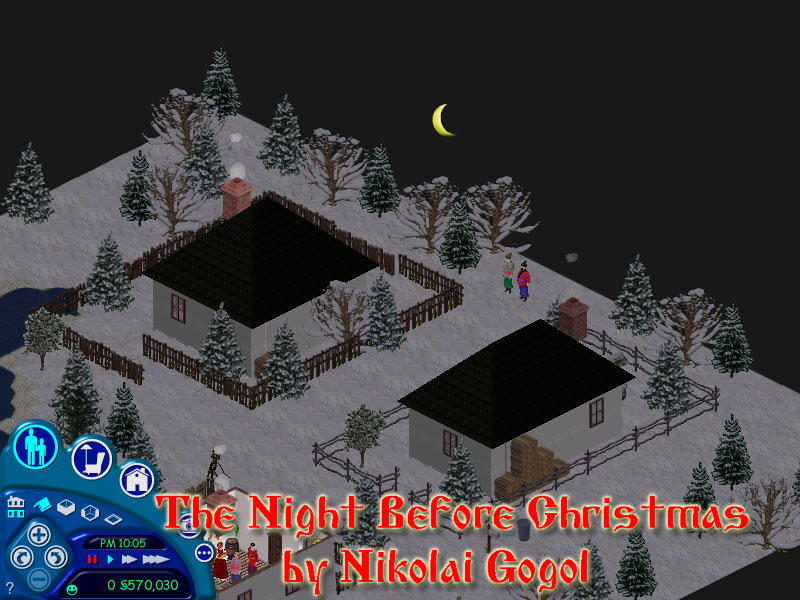 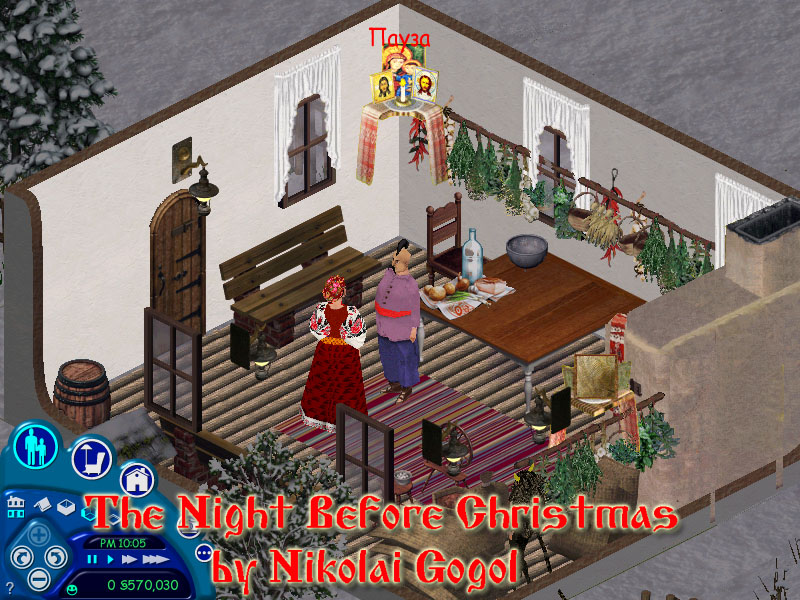 Новые обновления 14.11.2010 Русский дворец, пример русского зодчества Музей Коломенское New updatings 14.11.2010 New objects Wooden palace AlexisI in russian style Kolomenskoe Kolomenskoye is one of the most picturesque and popular places in Moscow. Kolomenskoye is a former royal estate situated several miles to the south-east of Moscow city-centre, on the ancient road leading to the town of Kolomna (hence the name). The scenic area which overlooks the steep banks of the Moskva River became a part of Moscow in the 1960s. Tsar Alexis I of Russia had all the previous wooden structures in Kolomenskoye demolished and replaced them with a new great wooden palace, famed for roofs. The foreigners referred to this huge maze of intricate corridors and 250 rooms, built without using saws, nails, or hooks, as 'an eighth wonder of the world'. The future Empress Elizabeth Petrovna was born in the palace in 1709. Upon departure of the court for St Petersburg, the palace got dilapidated, so that Catherine II refused to make it her Moscow residence. On her orders the palace was demolished in 1768. Fortunately a wooden model of the palace survives, and the Moscow Government has begun its full-scale reconstruction. Remaining vestiges of the palace complex include the five-domed Kazanskaya church (1662), of rather conventional architecture, and the wooden and stone gates of the former palace. Aerial view of Kolomenskoye 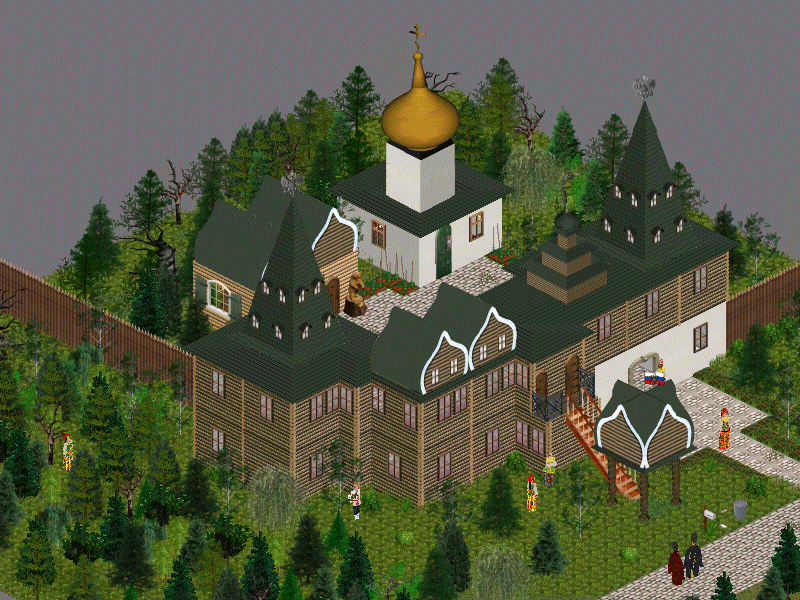 Новые обновления 20.10.2010 Новые объекты и скины русских сословий New updatings 20.10.2010 New objects and Russian skins 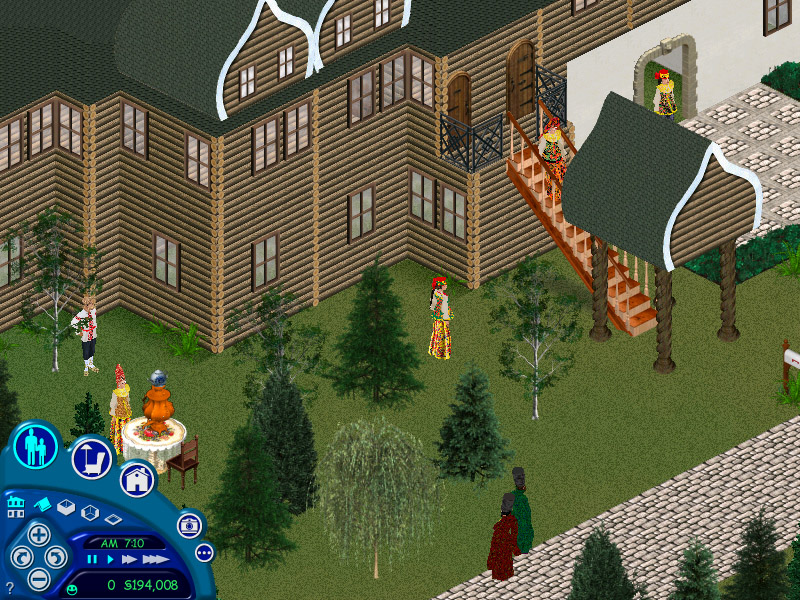 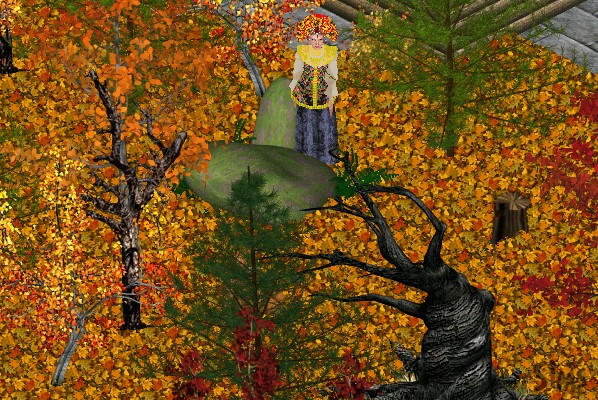 Новые обновления 4.10.2010 Осень в самом разгаре, новые обекты в православном мире Симс и вывески для русских магазинов на русском языке New updatings 4.10.2010 New objects Russia Russian Orthodox Church and Russian Sign Shop 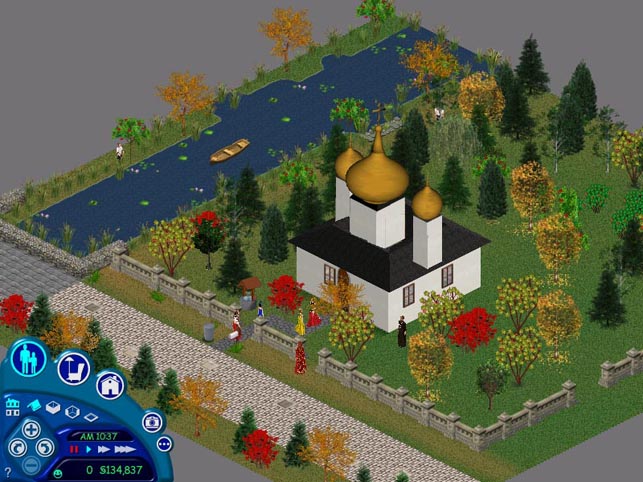 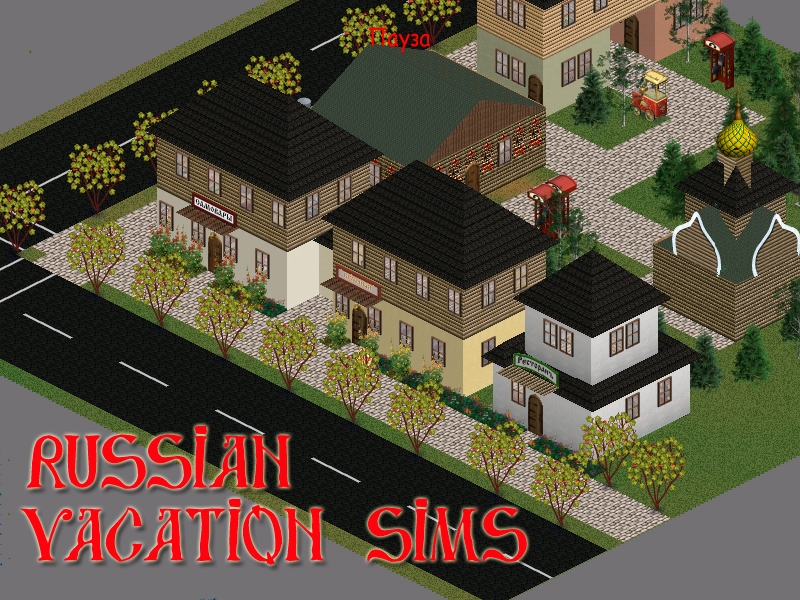 Новые обновления 27.09.2010 Начало осени, одно из самых красивых времен года, Симы собирают урожай и живут в классических русских домах (избах) New updatings 27.09.2010 New objects, walls, skins 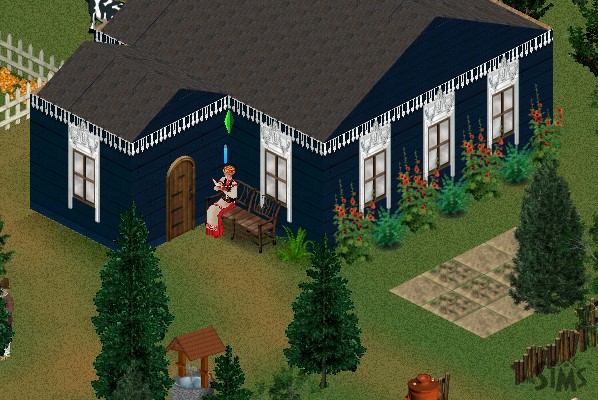 Новые обновления 23.04.2010 Появились новые объекты для магазина, русский ресторан, магазин женских шалей и новая тема РЕСТОРАН "УЗБЕКИСТАН", все костюмы оригенальны New updatings 23.04.2010 Uzbekistan, officially the Republic of Uzbekistan, is a doubly landlocked country in Central Asia, formerly part of the Soviet Union. It shares borders with Kazakhstan to the west and to the north, Kyrgyzstan and Tajikistan to the east, and Afghanistan and Turkmenistan to the south. Once part of the Persian Samanid and later Timurid empires, the region was conquered in the early 16th century by Uzbek nomads, who spoke an Eastern Turkic language. Most of Uzbekistan’s population today belong to the Uzbek ethnic group and speak the Uzbek language, one of the family of Turkic languages. Uzbekistan was incorporated into the Russian Empire in the 19th century and in 1924 became a constituent republic of the Soviet Union, known as the Uzbek Soviet Socialist Republic (Uzbek SSR). It has been an independent republic since December 1991. Uzbekistan has a wide mix of ethnic groups and cultures, with the Uzbek being the majority group. Uzbeks and Tajiks are descendants of the Indian and European nomads roaming and settled in the steppes of Central Asia. 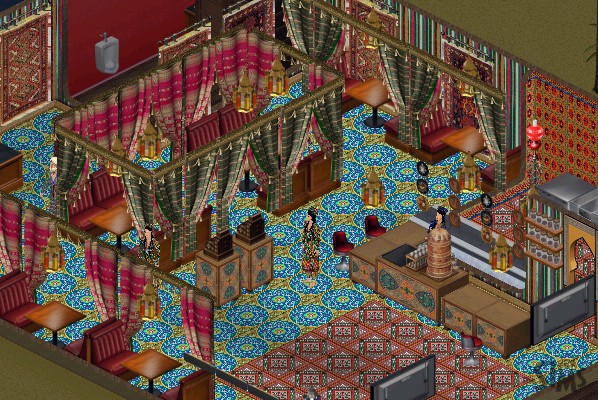 Новые обновления 24.03.2010 Всем привет, на сайте обновления, теперь Симы смогут ходить в православную церковь, там проводят службу патриарх Алексий II, Митрополит Ювеналий и Архиепископ Арсений. Так же новые предметы для православной церкви и маленький магазинчик с православными иконами. New updatings 24.03.2010 All greetings, on an updating site, now Sims can go to orthodox church, service patriarch Alex II, Metropolitan Juvenaly and Archbishop Arseny there hold. As new subjects for orthodox church and a small little shop with orthodox icons. 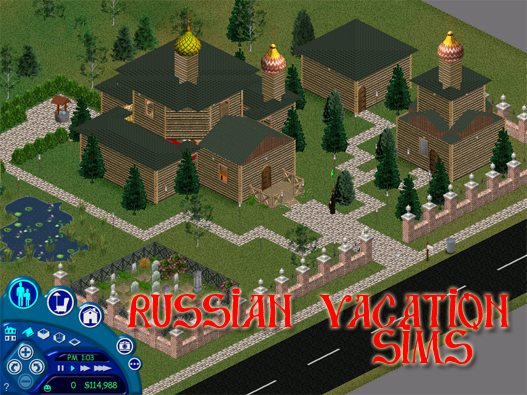 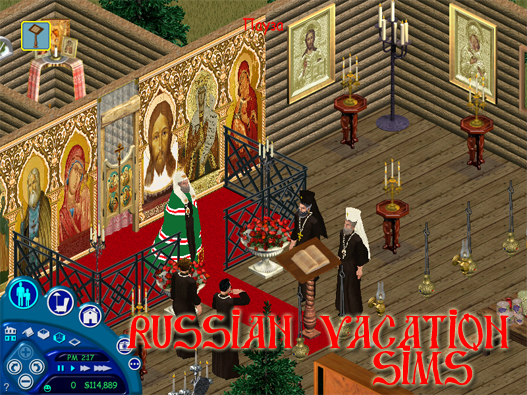 Новые обновления 26.02.2010 Всем привет, на сайте обновления появились предметы для Красной площади и Кремля, а так же скины "Бояр"( бояре- это высший слой феодального общества в X — XVII веках на Руси, в Московском княжестве, Болгарии,Молдавском княжестве,Валахии, с XIV века в Румынии.) New updatings 26.02.2010 Hi. On an updating site there were subjects for Red Square and the Kremlin, and as skins "Boyars" (boyars - it is the higher layer of a feudal society in X — XVII centuries in Russia, in the Moscow princedom, Bulgaria, the Moldavian princedom, Walachia, since XIV century in Romania.) 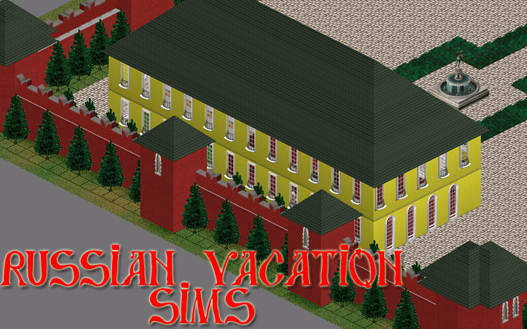 _______________________________________________________________________________________ Новые обновления 15.02.2010 У сайта появился свой баннер. Теперь в Русском городке открывается новый магазин русских сувениров, здесь Вы найдете и матрешек и русские женские шали и русскую народную хохломскую посуду. New updatings 15.02.2010 The site had the Banners. Now in Russian small town the new shop of Russian souvenirs opens, here you will find also nested dolls both Russian female shawls and Russian national khokhloma ware. 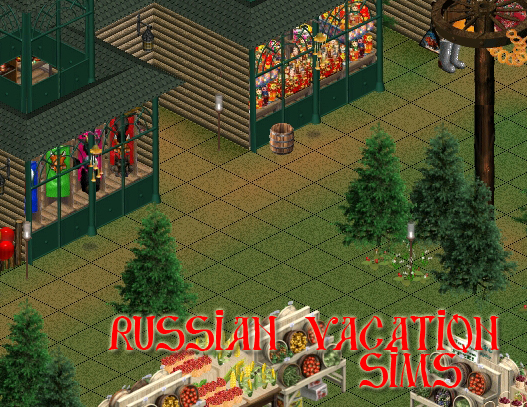 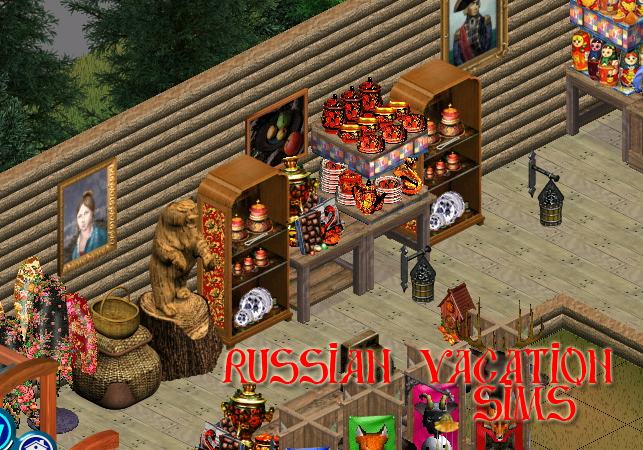 _____________________________________________________________________________________________ Теперь Симы поселились и в России, они празднуют русские праздники и много веселяться. Поздравляю Всех с праздником Велекой Масленицы, именно с это время наши предки провожали зиму и встречали приход весны! Welcome to a new site devoted to game Sims1. Now Simy have lodged and in Russia, they celebrate Russian holidays and much веселяться. I congratulate All on a holiday Velekoj of the Pancake week, in this time our ancestors saw off winter and met arrival of spring! 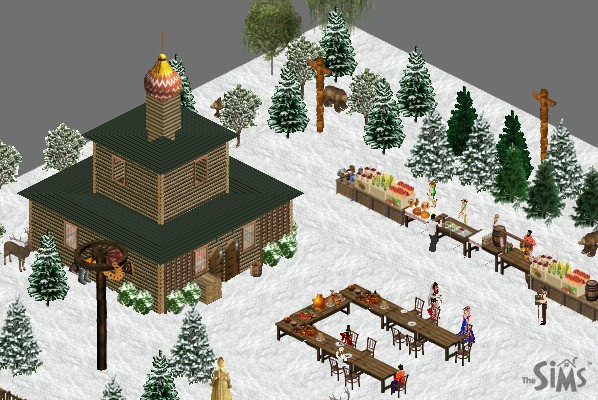 |






| Russian Vacation Sims© 2024 | Бесплатный конструктор сайтов - uCoz |